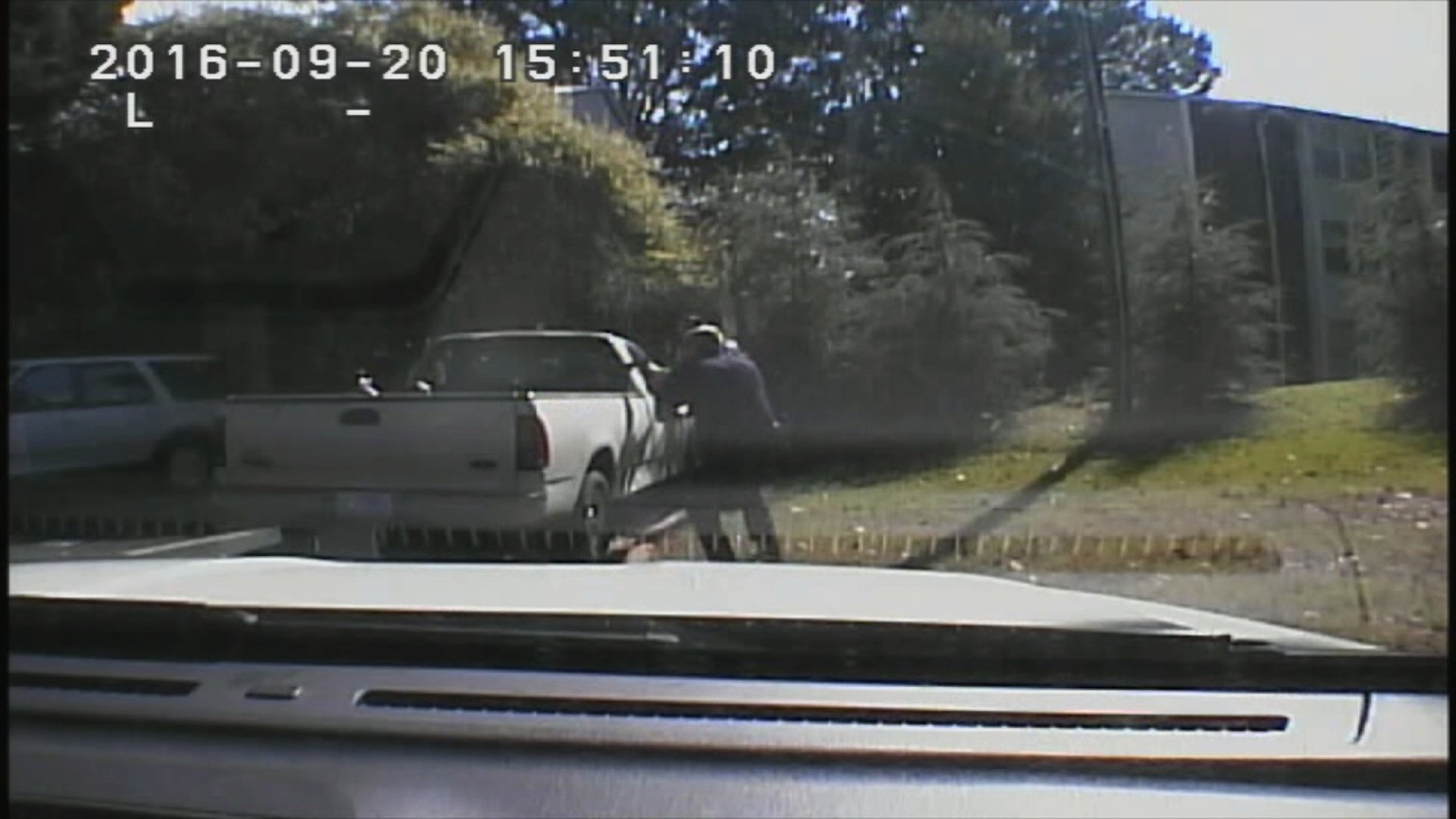Videos released Tuesday by the Charlotte Police Department show the final minutes of Keith Lamont Scott’s life as he lay dying in a parking lot, hands cuffed behind his back, pants pulled down to his ankles and shirt cut off to treat his gunshot wounds.
Newly released body-camera footage reveals that officers immediately noted the presence of a gun at the scene. The officers also noted a gunshot wound in the back of Scott’s left shoulder.
But the footage does little to resolve conflicting accounts over whether officers were justified in using deadly force.
“What you see on the footage is a perfect example of why law enforcement has to be sure before they pull the trigger and why the use of deadly force has to always be a last resort and not a first resort,” Scott family attorney Justin Bamberg said.
“You see a human being, father, a husband lose his life and that is extremely hard to watch, but that is the reality of these situations.”
The Charlotte Police Department has stood by its account that a black officer shot Scott, also black, after he made a threatening gesture with a gun. The department released photos of a pistol and ankle holster recovered at the scene and has said it found Scott’s DNA on the weapon.
Bamberg said on Tuesday that the videos fail to show Scott had a gun or that he made aggressive movements toward officers.
“The key question remains, whether this was a justified shooting,” he said.
What the new videos reveal
The new videos don’t contain much that we didn’t see in the first release of police body-camera and dashcam footage last week. But they show the scene from a different perspective and offer glimpses into how officers treated Scott as he lay dying.
The body-camera footage starts as the officer wearing the camera runs toward the scene before the shooting. Scott is seen standing next to his vehicle for a brief moment before the officer steps behind a car. The officer steps out from behind the car in time to see Scott go down.
The officer lurches toward Scott along with four other officers and handcuffs him behind his back. Then the officers begin delivering first aid until paramedics arrive about five minutes into the footage.
Scott moans as the officers cut his shirt off and apply pressure to three wounds: one on the back of his left shoulder, one in his wrist, one in the left side of his stomach.
They turn him over and note there’s no exit wound in his front chest from the hit to his shoulder. Scott’s eyes are closed, glasses askew on his head.
“My man, what’s your name?” the officers repeat as they try to keep him conscious. “Stay with us, bro, stay with us now.”
As the minutes pass, Scott’s eyes open, fixed in space, it seems, as the officers repeat their calls.
He never responds.
What about the gun?
Less than three minutes into the body-camera footage, a voice on the camera says “watch his gun.” About six minutes later, another cop is heard saying “we still got that firearm over there.”
The gun doesn’t appear in the vicinity of Scott’s body, at least not in the frame captured by the body-camera footage.
“You do hear officers make reference to a gun but you do not hear that it is in his hand,” Bamberg said Tuesday.
“It is my belief that if that firearm was within that section of his body you would have seen it.”
Even if Scott had a gun, only the discharge of a firearm justifies deadly force, not its mere presence, Bamberg’s co-counsel Charles Monnett said.
What do the gunshot wounds tell us?
It remains to be seen whether the gunshot wound in the back of Scott’s left shoulder proves meaningful.
For now, both sides concur and the footage clearly shows that it’s an entry wound.
Bamberg said an independent autopsy is being conducted on behalf of the family.
“More information will come,” he said.



